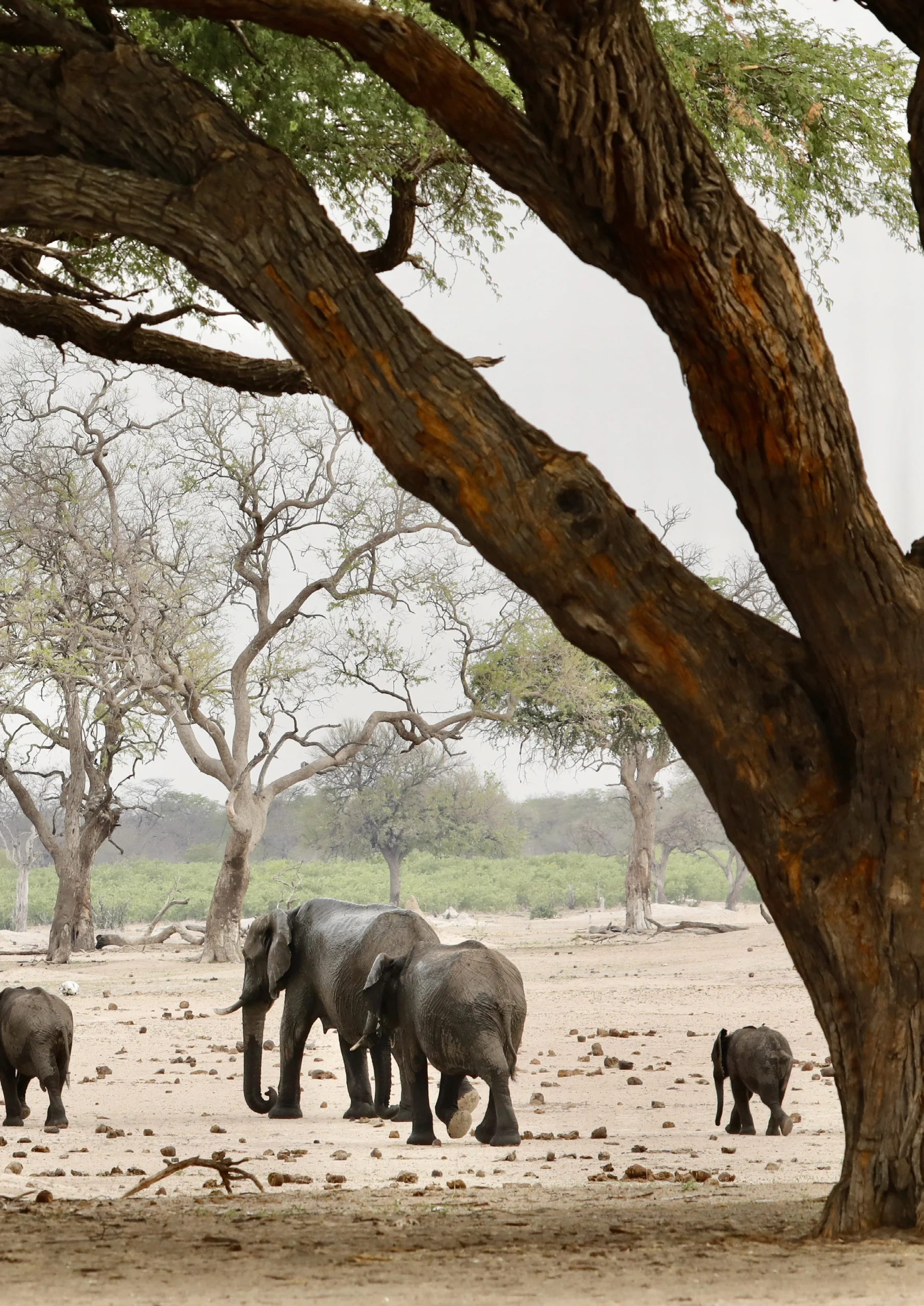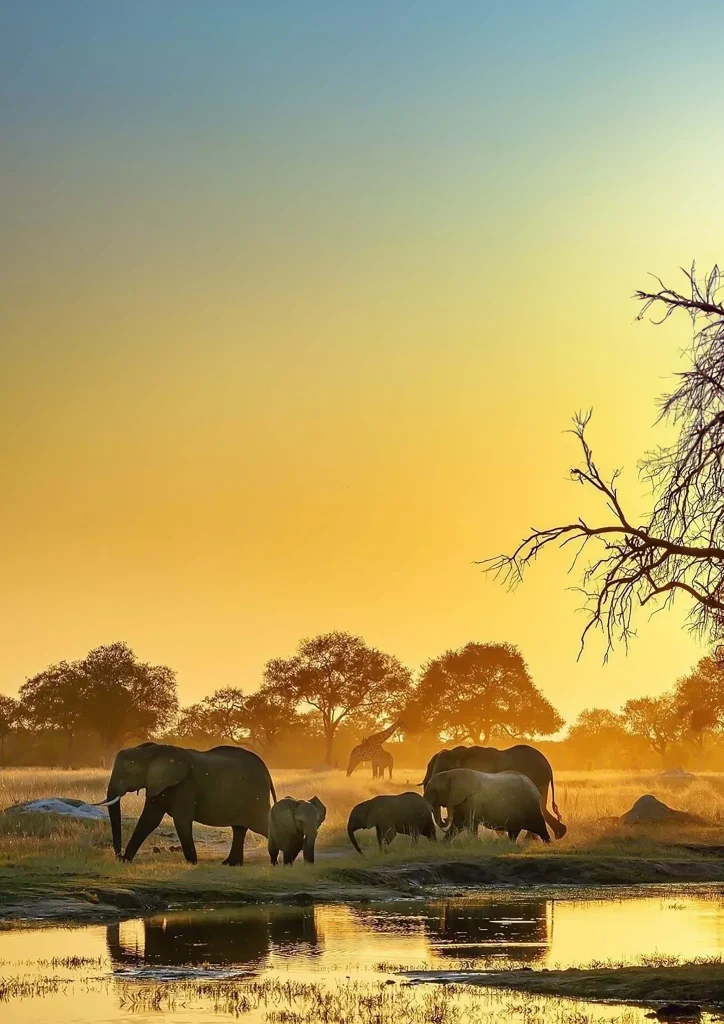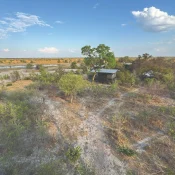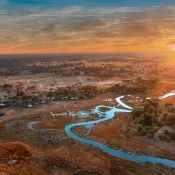
In Search Of Watering Holes: HWANGE’S ELEPHANTS & OTHER SPECIES MIGRATE TO BOTSWANA
Hwange National Park, home to the second largest concentration of elephants in the world, is reportedly experiencing another wildlife migration since 2019.
Waterholes have reportedly dried up due to the drought induced by the low rainfall received between November and March. Zimbabwean wildlife authorities say it’s not only elephants that are migrating but almost every animal that needs water in the park. Culminating in a sad and disturbing chapter in the park’s recent wildlife histories.
The situation is sad and disturbing since Zimbabwe is currently in pursuit of a US$5 billion tourism economy by 2025, and has been experiencing good visitor numbers since the reversal of the lockdown.
The local tourism industry is growing as evidenced by the ongoing structural developments mainly in Victoria Falls where the building or establishment of hotels, camps, restaurants and even holiday apartments are on the rise.
One big question comes to mind! To what extent would the migration impact the growth of Zimbabwe’s tourism industry? The truth is no one knows at the moment. However, migration might temporarily affect the recovery that had begun to be experienced across the hospitality, air travel and safari circuits.
The drought situation doesn’t augur well for Zimbabwe, currently receiving more than 20 regional, continental and international airlines through its various international airports like Victoria Falls International Airport and Robert Gabriel Mugabe International Airport.
While the industry understands that migration is part of the wildlife kingdom, and is a common occurrence between Hwange National Park and Botswana, it is concerned with the way nature is coming back to haunt it.
When the country’s largest national parkis hit by a drought of this magnitude, there is huge concern among industry players and the government! Any level of drinking water shortage for the precious wildlife is a source of worry, especially in an industry that looks after thousands of workers and is an economic backbone.
The situation in the 14 650 square kilometre park could get worse based on the Meteorological Services Department’s forecast of El Nino-induced low rainfall this season.
Home to over 50,000 elephants, the second largest in the world after Botswana (130, 000), tourist interest in the area will likely go down though locally based operators may not immediately feel the impact.
As of 2021, the park had 110 boreholes, a large number of them solar-powered. The current drought is likely to hurt tourism and jobs in that part of the country.
Firstly, there will be reduced numbers of tourists coming to Hwange National Park to see its iconic wildlife, such as elephants, lions, and rhinos. As the drought forces many animals to migrate in search of food and water, tourists are less likely to see the animals they come to see, which could lead to a decrease in tourist numbers.
Secondly, a decrease in tourist numbers in the park would mean a loss of revenue for the government, the park itself, and local businesses that rely on tourism.
Thirdly, few tourists visiting Hwange could lead to job losses in the region’s tourism sector, as well as in other sectors that support tourism, such as transportation and accommodation. In addition to the direct impact on tourism and jobs, the drought is also likely to have some indirect impacts, such as increased poaching and more conflict between humans and wildlife.
Increased poaching will be experienced since poachers will most likely target animals that are weak and vulnerable due to drought. This would further damage the park’s wildlife and reduce its attractiveness to tourists.

More conflicts between humans and wildlife will result from animals moving outside of the park in search of food and water. This could lead to damage to crops and livestock, as well as attacks on people. There will be a negative impact on local communities and make them less supportive of conservation efforts.
There is a need to protect Hwange National Park and its wildlife from the impacts of drought and climate change. The Zimbabwean government, conservation organizations, and the international community need to work together to ensure that this iconic park remains a thriving ecosystem for future generations.
It is important to note that the drought in Hwange National Park is not unique. Droughts are becoming more frequent and severe due to climate change. This is a serious threat to wildlife and to the communities that rely on tourism. Action to reduce greenhouse gas emissions and mitigate the impacts of climate change must be taken seriously by all.
Text by Martin Chemhere
All Categories
Recent Posts
Kazuma Safari Camp –
Kariba’s Kumabirira Lodge Is The Perfect Hideaway
Contact Us
+263 789 532 918




